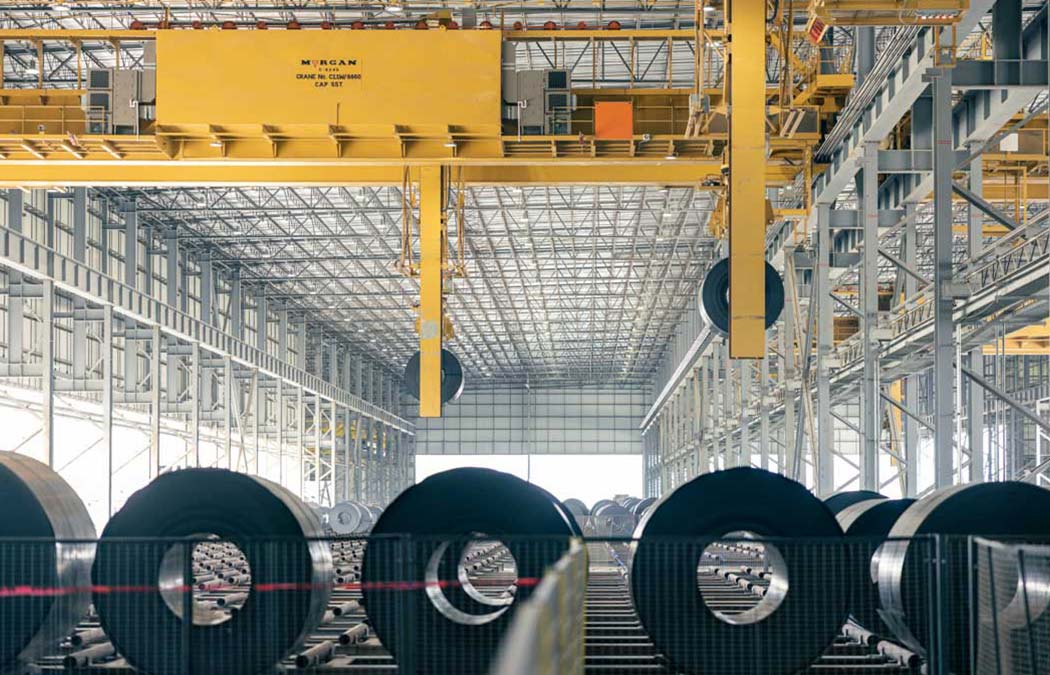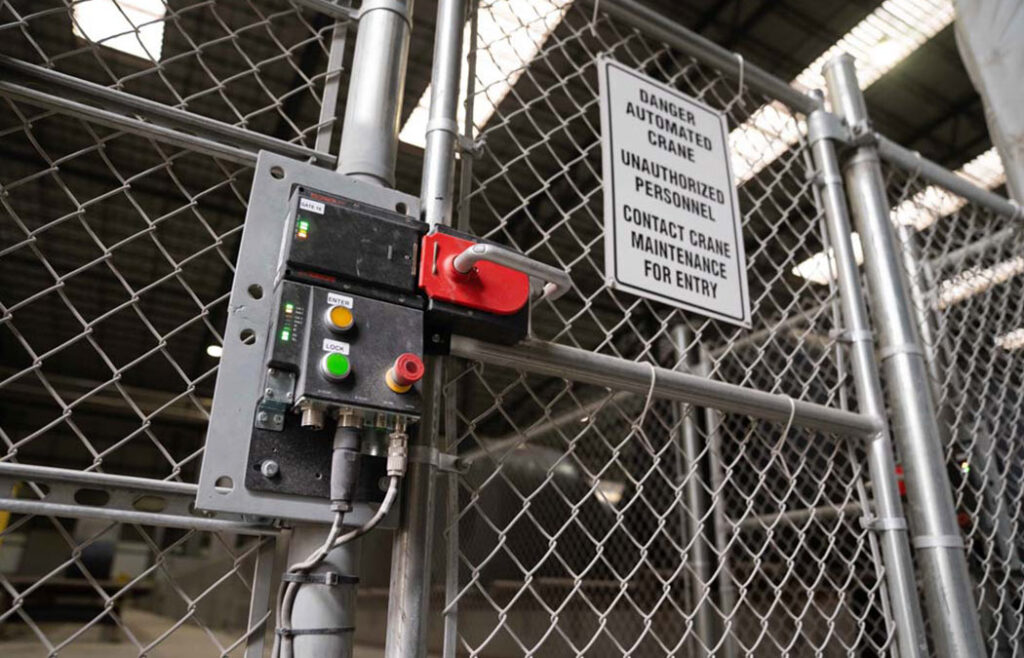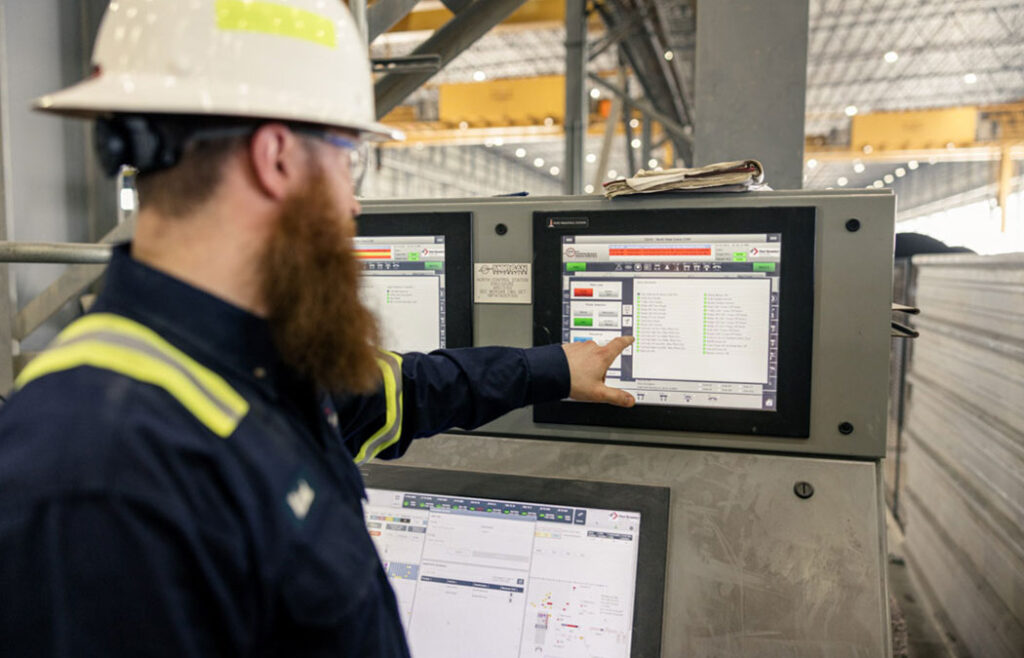Increase Crane Safety with Automation

/ Blog
Anyone who works with cranes is likely aware of the OSHA crane safety guideline, OSHA 1910.179. Not only does this section give quick definitions of the different types of cranes, but it also outlines specifics for the safety measures on a crane. These include 1910.179(d)(1-4) which explains standards for footwalks, handrails, and ladders on cranes for the utmost safety. Although it can be tedious to read, adhering to these standards has helped save lives. This shows that most accidents are preventable through engineering and proper operator training.

Reduce Struck by Accidents with Crane Safety Solutions
Unfortunately, a common accident to occur when working with overhead cranes is when people or other equipment are struck by the crane or the load a crane is carrying. Fortunately, there have been crane safety solutions engineered to minimize the risk of these injuries.
Emergency Stops for Crane Operation Safety
An emergency stop, or e-stop, improves overhead crane safety by providing a mechanism that gives workers access to quickly shut down the operation of the crane in an emergency. E-stops can be designed to perform multiple functions ranging from shutting equipment down to preventing it from powering up in the first place. Due to the size and nature of overhead cranes, they have several, if not more, e-stops equipped on a crane in high-use areas for quick access.
Utilizing Ground-Based Safety Zones
Ground-based safety zones are commonly integrated within autonomous yards where automated cranes are in use. CEPHAS©, Morgan’s warehouse management system, integrates with a yard’s GBS zones to prevent overhead cranes from flying into a zone when personnel have entered it. The crane will not be permitted to enter the zone until the personnel has exited following the commencement of their work.
Collision Avoidance Systems
Collisions typically happen when crane operators lose track of their location and/or other cranes within the building. These types of collisions can occur either between two cranes or between the crane and the building itself. These accidents can be devastating, but collision avoidance systems provide an additional level of overhead crane safety by utilizing either laser, radar, or microwave position feedback technology to help prevent this exact scenario. This type of automated system will typically alert the operator, slow down the crane, and finally stop the crane entirely.
Using Morgan CM for No-Fly Zones
No-fly zones are similar to ground-based safety zones as these also prevent overhead crane movements but in pre-determined zones, not just when personnel are present. With Morgan CM, no-fly zones can be customized in several different ways including size, shape & quantity. It can stop crane movement altogether, slow a crane if it gets too close to a zone, or prohibit trolley/bridge movement. A common form of a no-fly zone would include the area around a transformer vault or around a pulpit. No fly zones can be selectable such that it’s possible for the operator to disable a no-fly zone if it is necessary to enter that area.

Crane Inspections to Prevent Part Failure
Industrial automation has made major improvements to the level of safety workers can expect from cranes. Crane management systems are at the forefront of this development. With systems like this, crane operators are able to see reports and warnings of any issues the crane experiences while in operation.
Routine inspections for cranes are essential for preventing part failure. OSHA requires both daily and annual inspections. A daily check usually consists of running the controls and checking the operation of safety devices and limit switches. An annual crane inspection will cover loose bolts, worn parts including gearing, drums, brake systems, and deformation and/or cracks in structural members.
Read more about when to replace crane parts.
Only those trained and certified to run an overhead crane should be controlling it. Any certifications should be refreshed every 3 years. The amount of experience needed to maintain safe usage of these machines shouldn’t be overlooked. It is important to create an environment of respect around that knowledge by keeping boundaries in place.
Get a Quote for a Custom Engineered Crane Solution
Overhead cranes have come a long way regarding safety. You’ll find this to be especially true if you’re working with a company that can provide custom engineered solutions. Morgan has a 150-year long history of maintaining safety protocols for us and our customers as well as setting the bar higher for the industry. Thinking outside of the box means letting safety work for you. Custom solutions mean a happy medium of higher productivity without compromising safety.
It is always the right time to improve safety standards. Talk to one of our team members about how we design the safest cranes.

